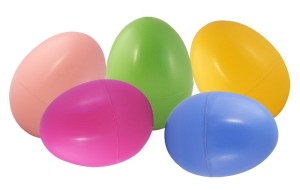

I know I’m a little late for an Easter post – oops! Post contains affiliate links, if you click through and make a purchase, I may receive a small percentage of your purchase as commission. I received these items in my item of the month club, which I paid for myself. I was not asked to write, nor was I compensated for this post, and all opinions are my own. Despite the similar names, these two eco-friendly Easter products aren’t made by the same company. I received both an Eco-Eggs egg coloring kit (made by Eco-Kids) and plastic eco eggs (made by Eco Eggs USA) in my Up on the Hill item of the month club.
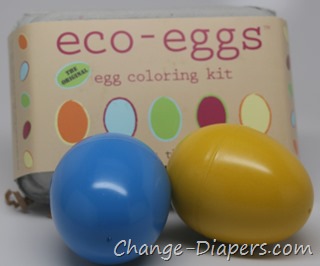
The plastic eco eggs are larger than a standard plastic Easter egg, easy to open, simple to securely close, and they’re eco-friendly. The pink, yellow, green, blue and purple eggs are made in the USA from plants and can even be composted in an industrial compost.

They are way higher quality than other eggs and are much more likely to last years & years (despite being compostable.) If you’re planning a big egg hunt, you can buy for as little as 15 cents each when purchased in bulk (1,000 eggs.) Eco Eggs are distributed by Green Team, so you can buy them in various quantities as Green Team retailers.
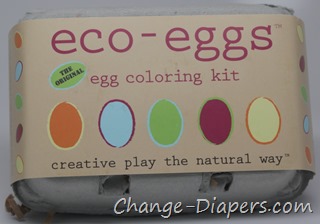
The Eco Eggs egg coloring kit comes in a cute mini egg-carton package with shredded “Easter grass” inside.

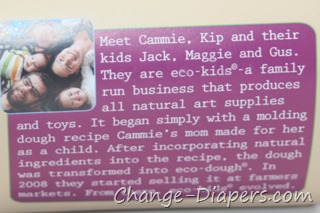
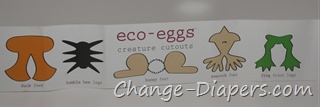
The color powders are made with natural and organic fruit, plant and vegetable extracts from annatto seed, curcumin, purple sweet potato and red cabbage.
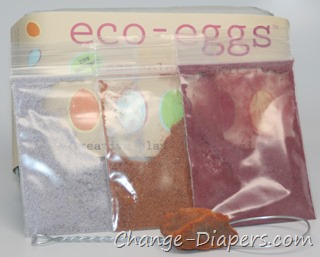
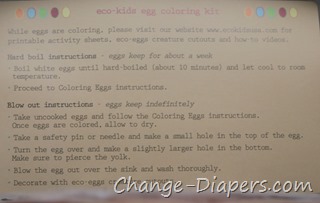
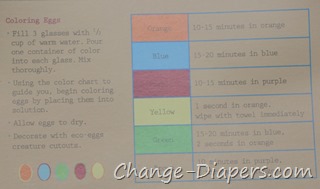
The kit includes the egg carton & “grass,” 3 color packets, an eco-crayon, the wire dipper thingie, and little cut out characters on the label, as well as instructions.
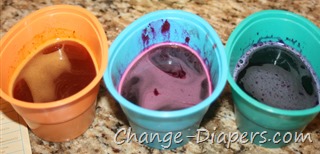
Mix with warm water, then follow the color chart.
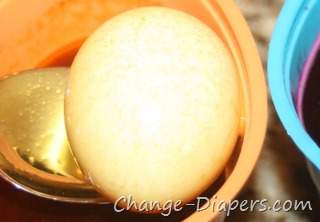
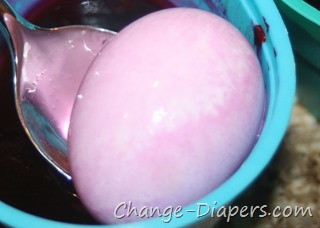

In a minute or so, you can get very light colors. After 5 minutes they are more vibrant:
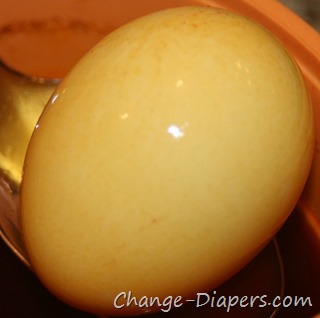

10 minutes:
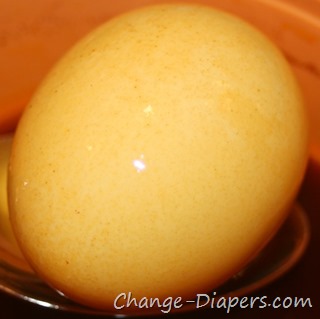
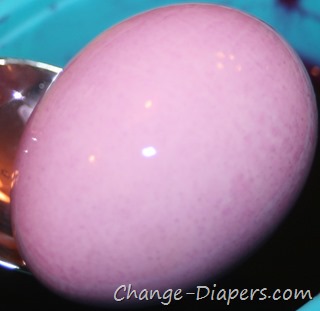
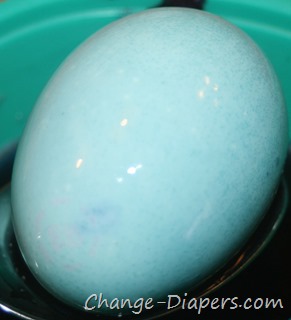
15 minutes:
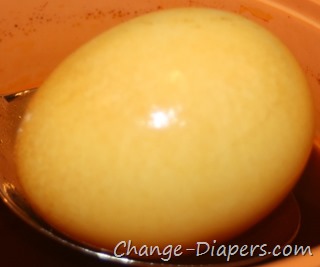


With a little patience, you can get pretty eggs:

I intended to try a green egg, but got distracted helping my kids with their eggs, and accidentally dumped the orange!
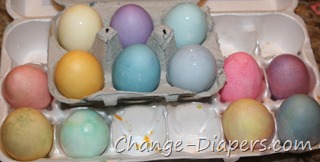
Above you can see the eggs I colored with the Eco Egg kit, compared to the ones my kids did with a Paas kit.
You can usually get a Paas kit with 6 colors for around $2, and many include stickers and things as well. I’ve even purchased kits with cups (which I reuse every year!) for very little. Those kits of course dye eggs quickly and are fun for little ones. I think the Eco Eggs are beautiful, but with only 3 colors, and a price tag of $14, I don’t think it’s the best thing for kids. There’s no dip in this & dip in that. You basically put the egg in and have to leave it for 10-20 minutes. That’s a bit of a snooze fest for little guys. If you want pretty eggs and don’t want the yucky stuff leaching into them (if you eat them) this kit is great!
Have you tried natural egg dying?



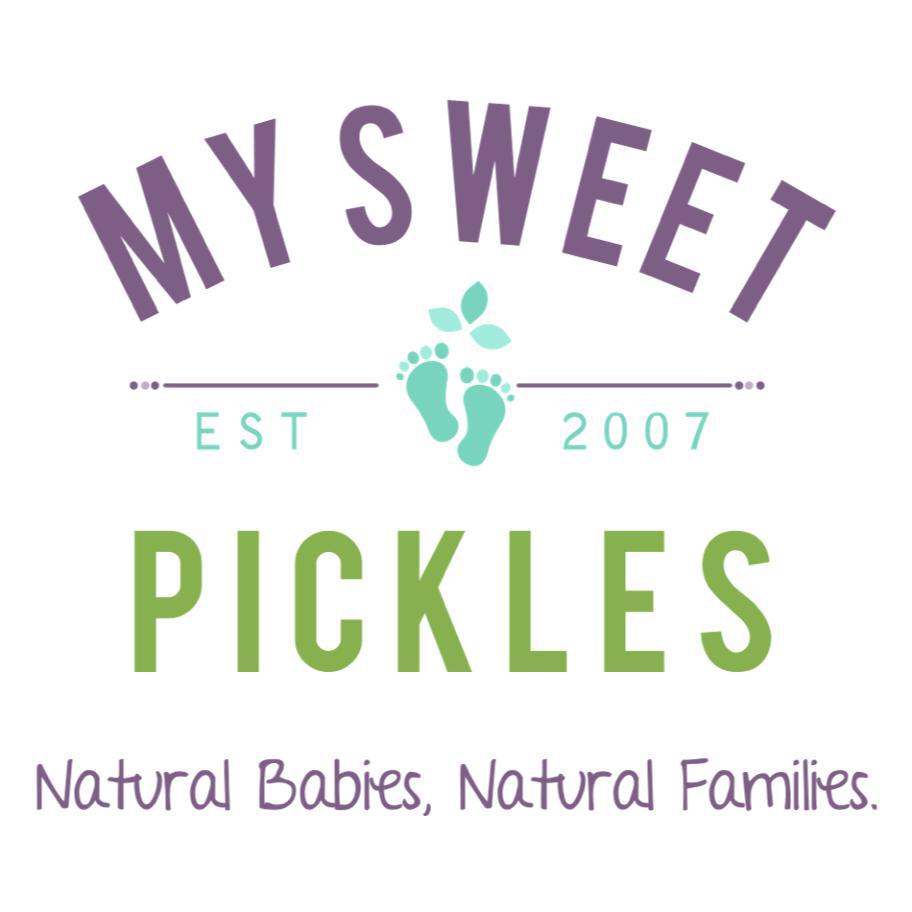




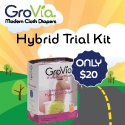
 Maria wants to live in a world where cloth diapers are the norm and moms can make parenting choices without judgement. When she’s not chasing her 18, 14 and 11-year old kids around, you might find her checking out the latest gadgets, organizing something (again) or exercising in the fresh air.
Maria wants to live in a world where cloth diapers are the norm and moms can make parenting choices without judgement. When she’s not chasing her 18, 14 and 11-year old kids around, you might find her checking out the latest gadgets, organizing something (again) or exercising in the fresh air. 






